As someone deeply entrenched in the outdoor gear industry for years, I understand the critical role proper equipment plays in any outdoor adventure. Among these, hydration packs have become a staple for many enthusiasts due to their lightweight and convenient hydration method. However, a common question that often puzzles users is: what temperature of water can a hydration pack hold? Today, I’m here to provide an in-depth analysis of hydration pack temperature limits, helping you use yours safely and effectively.
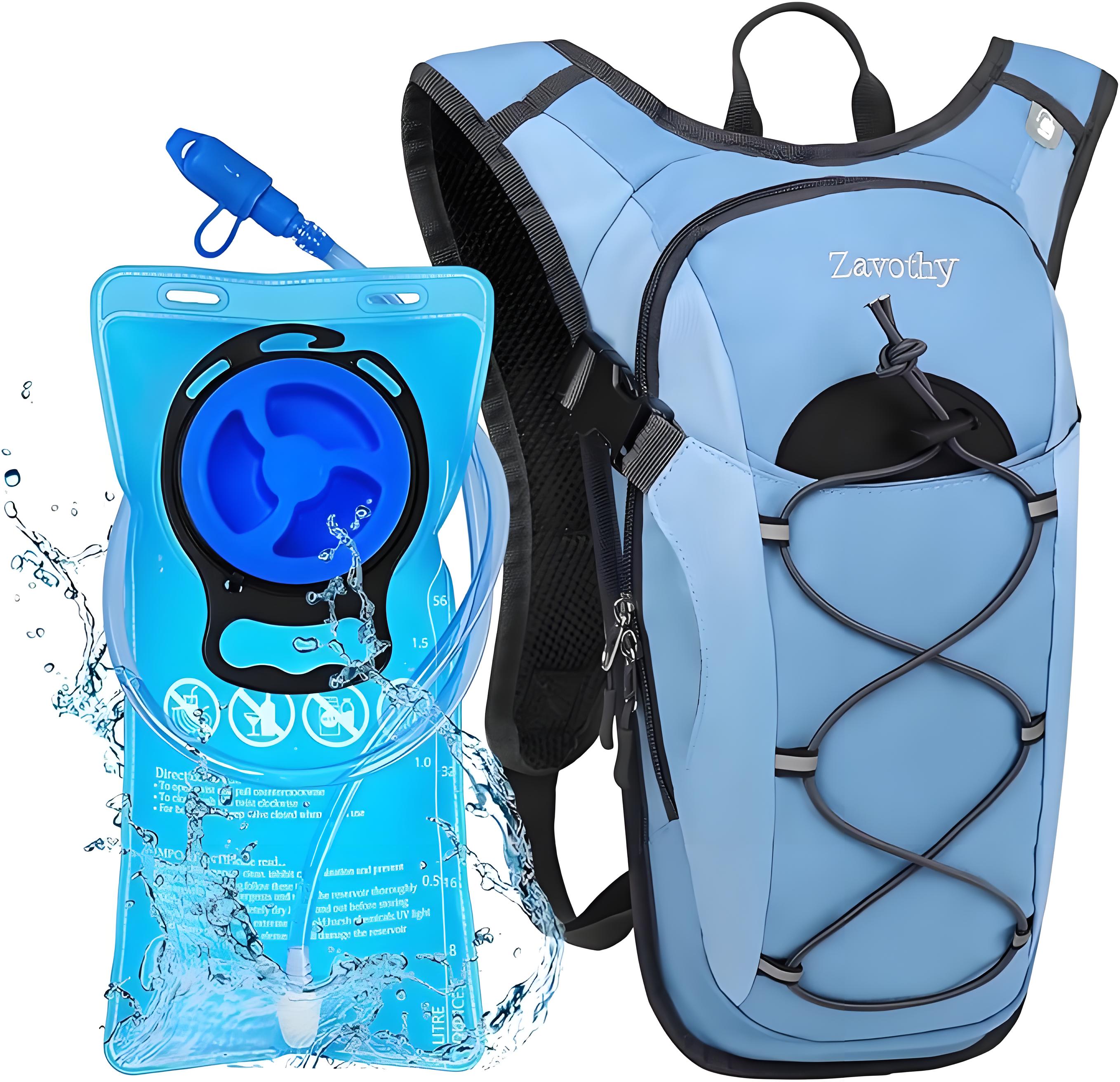
1. Hydration Pack Materials and Temperature Tolerance: Understanding Your Pack’s “Constitution”
To truly grasp how hot or cold water your hydration pack can hold, we first need to delve into its materials. Most mainstream hydration packs on the market are primarily made from TPU (Thermoplastic Polyurethane), PEVA (Polyethylene-vinyl Acetate), or PVC (Polyvinyl Chloride). Each material boasts different temperature resistance properties.
1. TPU Material: The Mainstay of Outdoor Hydration Packs
TPU is widely used in high-quality outdoor hydration packs due to its excellent abrasion resistance, tear strength, high elasticity, and non-toxic, odorless characteristics. It generally offers a broad temperature tolerance, though specific values can vary depending on manufacturing processes and additives.
Low-Temperature Performance: Most TPU hydration packs can remain flexible and resist cracking at temperatures as low as -20°C (-4°F) or even colder. This is incredibly important for winter outdoor activities like skiing or snow trekking. Imagine being in an icy wilderness, parched, and having a functioning hydration pack – it’s a huge relief.
High-Temperature Performance: The upper temperature limit for TPU hydration packs typically ranges between 60°C (140°F) and 80°C (176°F). This means they can hold warm water, but it’s not advisable to fill them with boiling or excessively hot water. Overly high temperatures can cause the TPU material to soften, deform, or even leach harmful substances, affecting water quality and your health.
2. PEVA Material: An Economical Choice
PEVA material hydration packs are generally more budget-friendly and often found in casual-use hydration bladders.
Low-Temperature Performance: PEVA’s low-temperature resistance usually falls between -10°C (14°F) and -20°C (-4°F), making them suitable for generally cold environments.
High-Temperature Performance: PEVA’s high-temperature resistance is comparatively lower, typically between 40°C (104°F) and 60°C (140°F). Therefore, PEVA hydration packs are best suited for room-temperature or cold water and are not recommended for hot water.
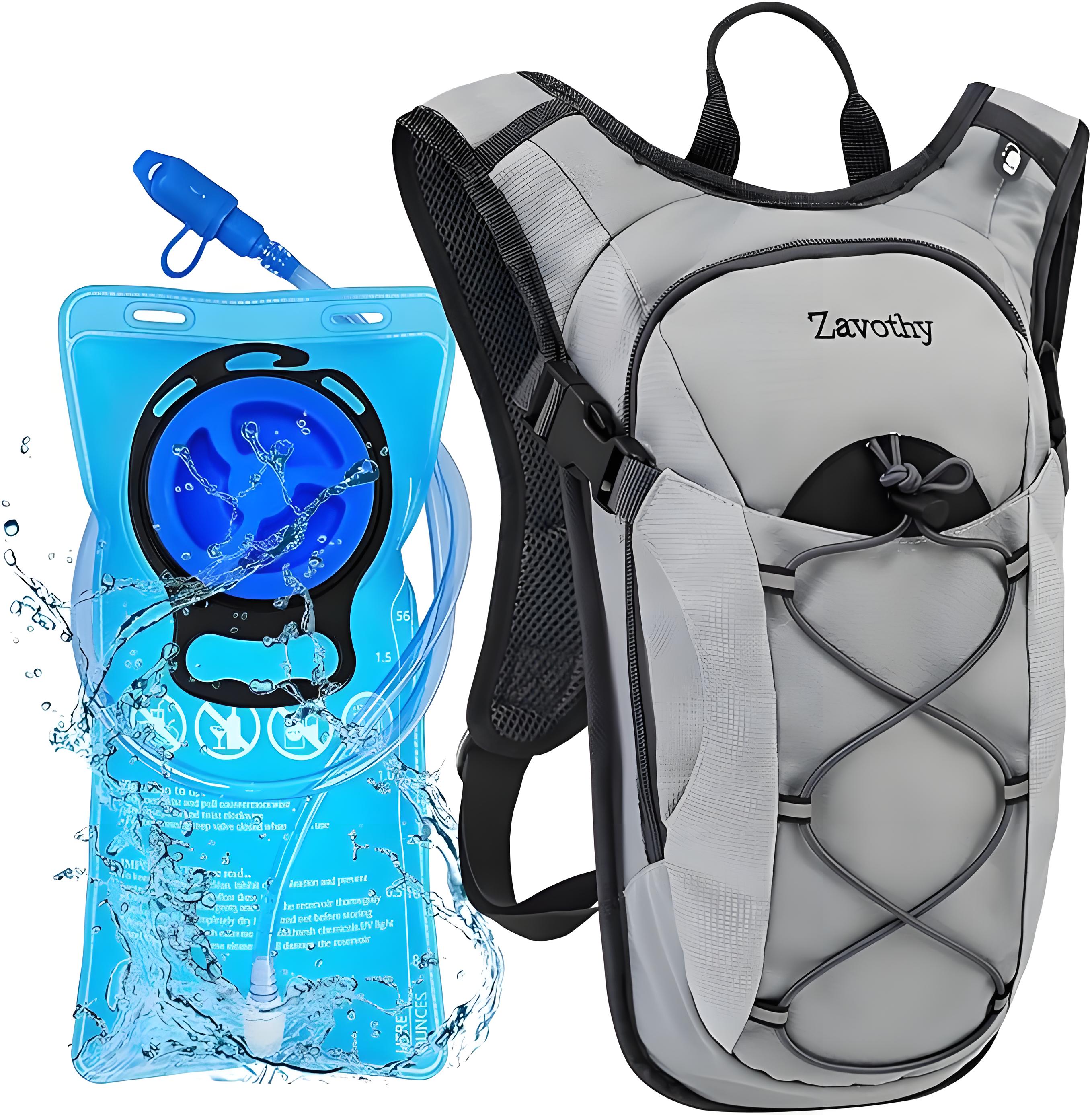
3. PVC Material: A Gradually Phased-Out Option
In earlier hydration pack products, PVC material was quite common. However, due to the potential for PVC to release plasticizers and other harmful substances at high temperatures, and its inferior flexibility and durability compared to TPU and PEVA, reputable brands no longer use PVC material for their outdoor hydration packs. If you still own an older PVC hydration pack, I strongly advise replacing it.
For a clearer understanding of the temperature resistance of different materials, I’ve compiled a brief comparison table:
Please note that the temperature ranges in the table above are typical values; always refer to the product’s specific instructions. When purchasing, make sure to carefully read the product description to understand its material and recommended operating temperatures.
2. Why You Shouldn’t Put Boiling Water in Your Hydration Pack: A Multi-faceted Look at Potential Risks
Even if some hydration packs are labeled with high-temperature resistance, based on my years of experience, I strongly advise against pouring boiling water (100°C / 212°F) directly into your hydration pack. This isn’t just about protecting the pack from damage; it’s also crucial for your health and safety.
1. Material Softening and Deformation: Risk of Pack “Injury”
Even for temperature-resistant TPU packs, exposure to boiling water will cause the material to soften rapidly. This can lead to:
Pack Swelling and Deformation: The steam and internal pressure generated by boiling water can cause the pack to swell, potentially even bursting or causing seams to split.
Seal Failure: High temperatures can deform the pack’s seals, connecting tubes, and other components, leading to leaks. A leaking pack during outdoor activities is undoubtedly a significant headache.
Structural Damage: Repeated long-term use with boiling water can accelerate the aging of the pack’s material, shortening its lifespan.

2. Chemical Leaching: A Health Concern Not to Be Ignored
This point is the most critical. While reputable outdoor hydration pack brands use food-grade materials and claim to be free of harmful substances like BPA (Bisphenol A), high temperatures are catalysts for many chemical reactions.
Potential Leaching Risk: Even food-grade materials might pose a risk of trace chemical leaching at extremely high temperatures. If these substances enter your drinking water, long-term consumption could have potential impacts on your health. This is especially true for low-cost or counterfeit hydration packs, where material safety cannot be guaranteed.
Plasticizer Issues: Although TPU and PEVA do not contain plasticizers, if you encounter an unknown material or if unscrupulous manufacturers have blended PVC components into the material, high temperatures could lead to significant plasticizer leaching. Plasticizers are endocrine disruptors that can negatively affect the human endocrine system.
3. Scalding Risk: Outdoor Safety First
Pouring boiling water into a hydration pack carries a high risk of scalding if not handled carefully. In an outdoor environment, where conditions are limited, the consequences of a burn can be even more severe.
Danger During Pouring: Steam and splashing water during the pouring process can easily scald your hands or body.
Danger During Drinking: Even if the water temperature in the pack has cooled down slightly, if it’s still too hot, drinking it can scald your mouth and esophagus.
4. Affects Taste: Your Water’s “Flavor” Can Change
Hot water left in a plastic hydration pack for a period is highly likely to develop a “plastic taste.” This not only affects the taste of your drinking water but also indirectly indicates that the pack’s material may have undergone some changes due to the high temperature. In outdoor activities, having sufficient and palatable drinking water is vital for maintaining energy and morale.
3. Outdoor Hydration Strategies: Balancing Safety and Convenience
Since hydration packs aren’t suitable for boiling water, how should we manage different hydration needs during outdoor activities? Here are some of my experiences and strategies:
1. Winter Hydration: Combining Insulation and Safety
In cold winter outdoor activities, supplementing with warm water is an effective way to maintain body temperature and prevent hypothermia.
Carry an Insulated Bottle or Flask: This is the most direct and safest solution for warm water. You can fill it with hot water before departure and replenish it as needed during your journey. Many lightweight outdoor insulated bottles are available, offering moderate capacity and excellent insulation.
External Insulation Sleeve for Hydration Packs: If you prefer using a hydration pack, consider equipping it with an insulation sleeve. An insulation sleeve can effectively slow down the rate at which the water in the pack cools, helping to keep it warm for longer.
Preventing Pack Freezing: In extremely cold conditions, the hydration tube and bite valve can easily freeze. Consider these measures:
During breaks, place the pack deep inside your backpack or close to your body to use body heat for insulation.
After each drink, forcefully blow air back into the hydration tube to clear any remaining water, preventing it from freezing.
Choose hydration packs with insulated tube covers.
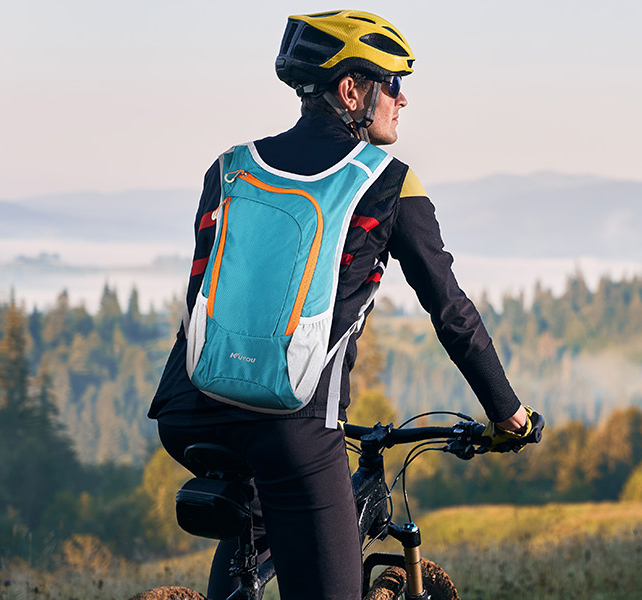
2. Summer Hydration: Prioritizing Coolness and Sufficiency
In summer outdoor activities, hydration is paramount, requiring ample consumption of cool water.
Pre-chill Your Hydration Pack: Before setting off, fill your hydration pack with water and refrigerate or freeze it. This allows you to enjoy cool drinking water for a period outdoors. Be careful not to freeze the pack completely; leave some space to prevent ice expansion from bursting the pack.
Carry Water Purification Equipment: If your trip is long and there are water sources along the way, consider carrying a portable water filter or purification tablets. This allows you to access drinking water from natural sources anytime, reducing your pack weight.
Avoid Direct Sunlight: Keep your hydration pack inside your backpack, out of direct sunlight, to effectively slow down the water’s temperature rise.
3. Multi-functional Hydration Packs: Adapting to Different Scenarios
The market now offers some cleverly designed hydration packs, such as:
Detachable Filter Hydration Packs: These packs come with built-in filters, allowing direct purification of natural water sources, which is convenient and quick.
Multi-compartment Hydration Packs: Some packs are designed with multiple compartments, allowing you to store water or beverages at different temperatures separately.
High-Temperature Kettle and Hydration Pack Combination: Some outdoor brands offer matching high-temperature resistant kettles or collapsible buckets for boiling water, which can then be allowed to cool before being poured into the hydration pack. This is a more reliable solution.
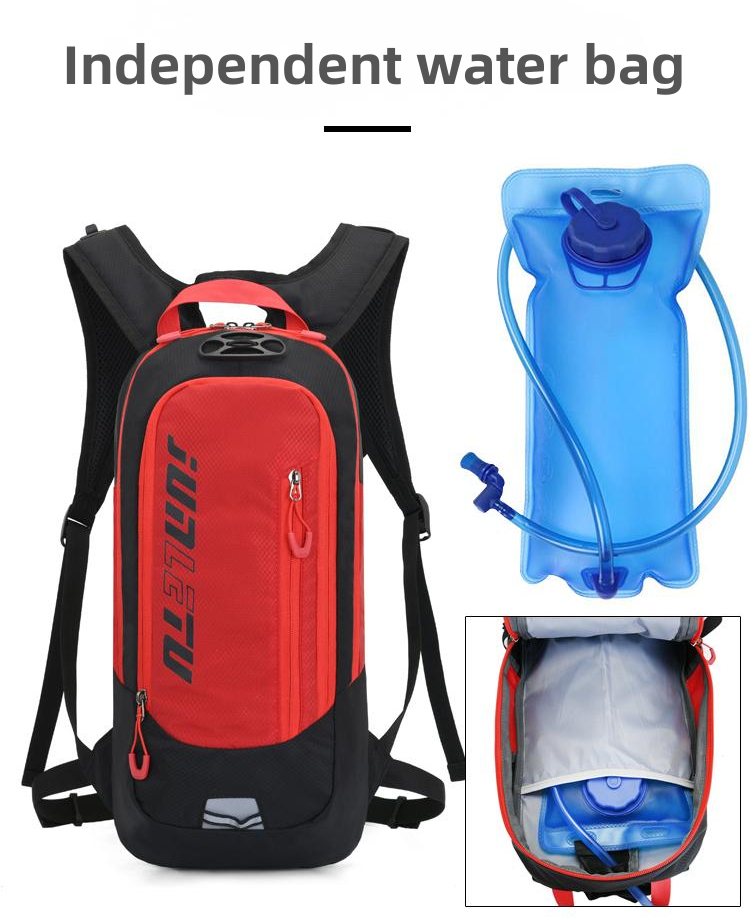
4. Daily Care and Maintenance for Your Hydration Pack: Key to Longevity
Proper usage and daily maintenance can significantly extend the lifespan of your hydration pack and ensure safe drinking water.
1. Cleaning Before First Use
For a new hydration pack, a thorough cleaning before its first use is essential.
Rinse with Water: Rinse the inside of the pack repeatedly with clean water to remove any manufacturing residues or odors.
Baking Soda/Citric Acid Solution Soak: You can soak the pack for 1-2 hours in a solution of warm water and baking soda or citric acid (about one tablespoon of baking soda or citric acid per liter of warm water), then rinse thoroughly. This helps remove odors and sanitize.
Air Dry: After cleaning, make sure to hang the pack upside down to air dry completely, ensuring the inside is thoroughly dry to prevent bacterial growth.
2. Cleaning After Each Use
After each use of your hydration pack, timely cleaning is crucial.
Empty and Rinse: Empty the water from the pack and rinse the inside with clean water. If you’ve used sugary drinks or other flavored liquids, a more thorough cleaning is necessary.
Use Professional Cleaning Tools: You can use specialized hydration pack brushes (typically long-handled brushes and tube brushes) to clean the inside of the pack and the drinking tube, ensuring no residue remains.
Drying: This is one of the most important steps. Ensure the pack is completely dry inside and out to prevent mold growth. You can use a dedicated hydration pack drying rack or use a dry towel to prop open the pack’s opening to allow for internal ventilation.
3. Storage Precautions
Completely Dry: Make sure the hydration pack is completely dry before storing it.
Avoid Direct Sunlight: Store the pack in a cool, dry, and well-ventilated place, away from direct sunlight, which helps extend the material’s lifespan.
Keep Away from Sharp Objects: Avoid contact between the pack and sharp objects to prevent scratches or punctures.
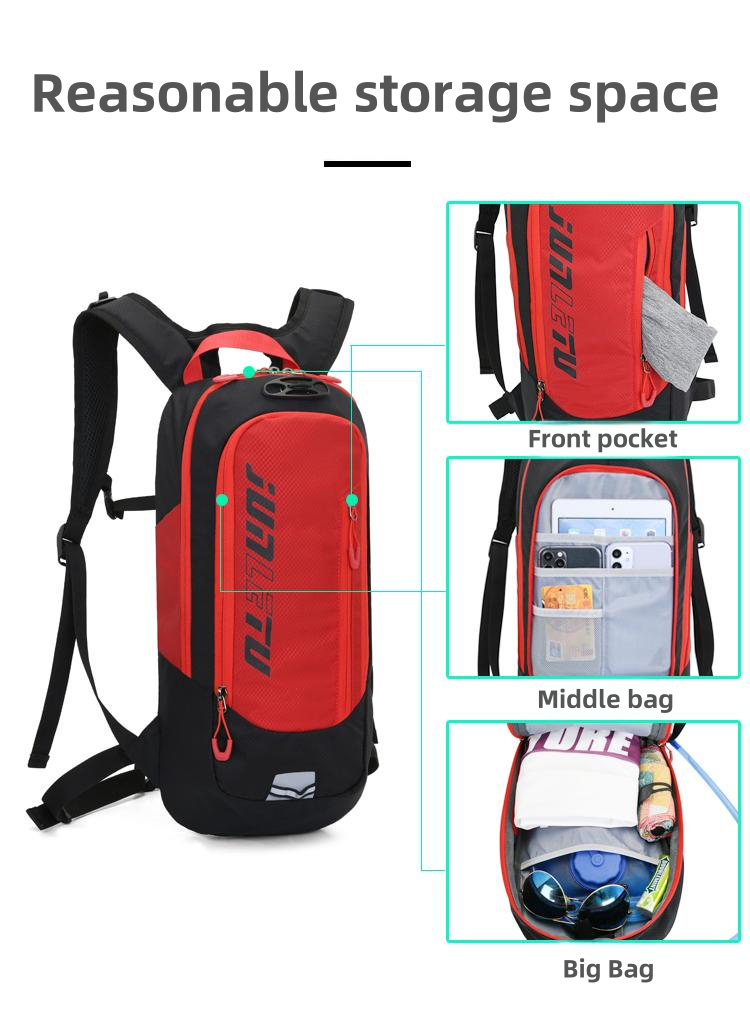
4. Regular Inspection
Check for Leaks: Before each use, check the pack’s seals and tube connections for any signs of leakage.
Inspect Pack Material: Look for any signs of aging in the pack’s material, such as cracks, discoloration, hardening, or stickiness. If you notice any anomalies, replace it immediately.
Replace Accessories: Accessories like the drinking tube and bite valve will wear out with frequent use and over time. It’s advisable to inspect and replace them regularly.
5. Q&A: Other Questions You Might Have
Q1: Can I put carbonated drinks in my hydration pack?
A1: Not recommended. Carbonated drinks produce gas, which can lead to excessive pressure inside the pack, potentially even bursting it. Additionally, the sugar and acidity in carbonated drinks can corrode the pack’s interior, affecting its lifespan and cleanliness.
Q2: Can I put juice, milk, or other liquids in my hydration pack?
A2: Technically yes, but strongly not recommended. These liquids can easily breed bacteria in the pack, and their flavors are difficult to remove. If you absolutely must, ensure immediate and thorough cleaning and disinfection after use, followed by complete drying. Otherwise, you might experience odors during subsequent uses, or even health issues.
Q3: My hydration pack is leaking. Can it be repaired?
A3: If the pack has only a minor puncture or scratch, some brands offer patches for temporary repair. However, from a safety perspective, if your hydration pack leaks, I recommend replacing it directly to avoid more serious leakage problems during outdoor activities, which could affect your hydration supply.
Q4: How can I remove odors from my hydration pack?
A4: The plastic smell from new hydration packs can often be removed by soaking them in a baking soda or citric acid solution. If your pack has developed an odor over time, try soaking and cleaning it with diluted white vinegar or a specialized hydration pack cleaner, then rinse thoroughly and air dry.
Q5: Why is the water flow from my hydration pack slow?
A5: Check if the drinking tube is clogged or if the bite valve is damaged. Sometimes, insufficient water pressure in the pack can also lead to slow flow; try placing the pack higher in your backpack to use gravity. Additionally, a hydration pack that hasn’t been cleaned for a long time might have slow flow due to algae growth inside.
I hope this article helps you gain a more comprehensive understanding of your hydration pack’s temperature capabilities and how to use and maintain it correctly. On any outdoor adventure, safe hydration is always the top priority. May all your outdoor journeys be full of joy and free from worries!